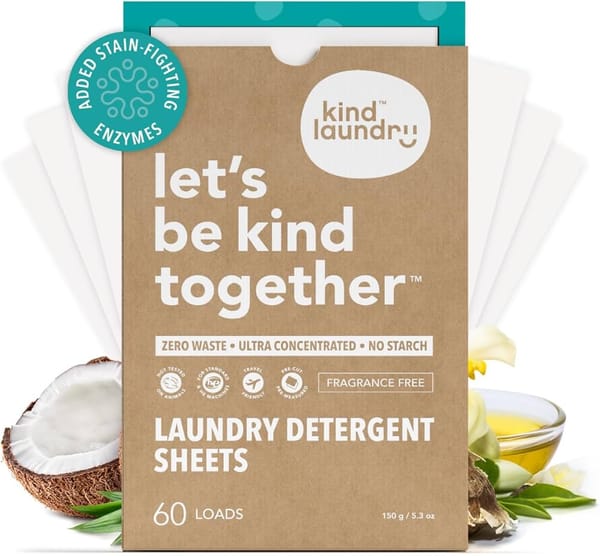Minimalist Living: How Simplifying Your Life Creates a More Sustainable Future

We now live in a world driven by rapid consumerism and constant digital distractions, many are embracing minimalism to restore balance, reduce stress, and live more sustainably. But minimalism is more than just decluttering - it’s a mindset shift that encourages intentional living, mindful consumption, and a deeper connection to what truly matters.
By prioritizing quality over quantity and focusing on what adds genuine value to our lives, we naturally reduce waste, conserve resources, and shrink our environmental footprint. This guide explores the powerful link between minimalism and sustainability, offering actionable steps to help you adopt a simpler, greener lifestyle.
What Is Minimalism and How Does It Support Sustainability?
Minimalism is often mistaken for extreme deprivation, but it’s about creating space - physically, mentally, and emotionally, for what truly matters. By eliminating excess and making intentional choices, we can align our consumption habits with sustainability principles, ensuring a positive impact on both personal well-being and the environment.
From an environmental perspective, minimalism promotes a shift in consumer behaviour, leading to significant sustainability benefits:
Reducing Waste and Pollution
Every product we purchase has a lifecycle—from production and transportation to usage and disposal. Overconsumption leads to increased waste, excessive packaging, and pollution. According to the Environmental Protection Agency (EPA), the average American generates about 4.9 pounds of waste per day, much of which ends up in landfills or polluting our oceans.
Minimalism helps address these issues in several ways:
- Buying fewer, higher-quality items reduces overall waste generation.
- Choosing reusable alternatives over disposable products cuts down on single-use plastics and unnecessary packaging.
- Repairing, repurposing, and recycling extend the life cycle of everyday objects, minimizing landfill contributions.
By adopting a more conscious approach to consumption, we can directly combat pollution and promote a cleaner, healthier planet.
Lowering Carbon Footprint
Manufacturing, transporting, and disposing of consumer goods contribute significantly to greenhouse gas emissions. The fashion industry alone is responsible for around 10% of global carbon emissions—more than all international flights and maritime shipping combined.
By embracing minimalism:
- We reduce demand for mass production, which lowers energy consumption and emissions.
- We prioritize durable, long-lasting items, decreasing the need for frequent replacements.
- We choose locally sourced and second-hand goods, cutting down on transportation-related emissions.
Living with less directly translates to a reduced carbon footprint, making minimalism a practical approach to combating climate change.
Conserving Natural Resources
Consumerism drives excessive resource extraction, leading to deforestation, water depletion, and ecosystem destruction. For instance, producing a single cotton T-shirt requires approximately 2,700 Litres of water, enough to sustain one person for nearly 2.5 years.
Minimalism helps conserve these vital resources by:
- Encouraging mindful purchasing to reduce unnecessary demand for new materials.
- Supporting sustainable brands that use ethical and eco-friendly production practices.
- Opting for second-hand, refurbished, or multi-purpose products, reducing the need for constant new production.
By consuming less, we help protect forests, waterways, and wildlife habitats from the devastating effects of over extraction.
Practical Steps to Adopt Minimalist Living for Sustainability
Transitioning to a minimalist lifestyle doesn’t happen overnight, but small, intentional changes can have a big impact. Here are some actionable steps to guide you:
Mindful Decluttering
Assess your belongings and identify what truly serves a purpose. Instead of simply discarding items, consider:
- Donating to local charities, shelters, or resale shops to give items a second life.
- Recycling responsibly, especially electronics, textiles, and plastics.
- Repurposing and upcycling old items to reduce waste and add creativity to your space.
Minimalist decluttering isn’t about getting rid of everything—it’s about making thoughtful choices and reducing unnecessary accumulation.
Intentional Shopping
Before making a purchase, ask yourself:
- Do I genuinely need this item, or is it an impulse buy?
- Will it last a long time, or will it need frequent replacements?
- Is it made from sustainable materials and ethical labour practices?
- Can I find a second-hand or locally sourced alternative?
By adopting mindful shopping habits, we reduce unnecessary spending and support businesses committed to sustainability.
Sustainable Fashion Choices
The fashion industry is one of the biggest polluters, contributing to environmental degradation and exploitative labour conditions. A minimalist wardrobe promotes sustainability through:
- Capsule wardrobes, featuring timeless, versatile pieces that reduce the need for constant buying.
- Investing in high-quality, durable clothing, minimizing waste from cheaply made fast fashion.
- Choosing eco-friendly fabrics like organic cotton, hemp, bamboo, or recycled materials.
- Shopping second-hand, extending the life cycle of existing garments and reducing demand for new production.
Minimalist fashion choices not only simplify your closet but also help combat the environmental impact of fast fashion.
Eco-Friendly Kitchen and Food Habits
Minimalism extends to the way we consume food and manage kitchen waste:
- Meal planning and mindful grocery shopping prevent food waste.
- Buying in bulk reduces excess packaging and supports a zero-waste lifestyle.
- Using reusable storage solutions like glass containers, cloth bags, and beeswax wraps instead of disposable plastic.
- Composting food scraps minimizes landfill waste while enriching soil for gardening.
A minimalist approach to food consumption fosters sustainability while promoting healthier eating habits.
Digital Minimalism
Even digital consumption has an environmental impact. Data centres that store emails, files, and streaming services use vast amounts of energy. Practicing digital minimalism involves:
- Decluttering digital files by deleting old emails, unused apps, and redundant cloud storage.
- Using energy-efficient devices and extending their lifespan instead of upgrading frequently.
- Limiting screen time, reducing energy use from constant streaming and scrolling.
Digital decluttering not only saves energy but also helps reduce mental overload and distractions.
Start Your Minimalist Lifestyle
Living minimally is a powerful approach to sustainability. By consuming less, making intentional purchases, and prioritizing quality over quantity, we can collectively reduce waste, conserve resources, and lower our carbon footprint.
Sustainability begins with small, everyday choices. Whether it’s decluttering your home, adopting mindful shopping habits, or reducing digital clutter, every step toward minimalism contributes to a healthier planet.
Are you ready to simplify your life and help protect the planet? Start today with just one small change - your future self (and the environment) will thank you.



